
We’ve already put up the Huawei Mate 20 Pro against the previous flagship of Samsung. This time around, we’ll be pitting the Huawei Mate 20 Pro’s camera chops against, arguably, one of the most revered smartphones in Apple’s current range; the iPhone XS Max.
In this comparison, we will only be looking at the lowlight and indoor performance of the rear camera of both smartphones. Overall performance will probably be reserved in a future article. Now, enough of this preface and let’s jump in to the first photo.


The first photo we’re going to take a look at is a Christmas sculpture. Set indoors in a hotel, the sculpture is bathed in white LED indoor light from the ceiling. At the center is a bright star that emanates a strong white light.
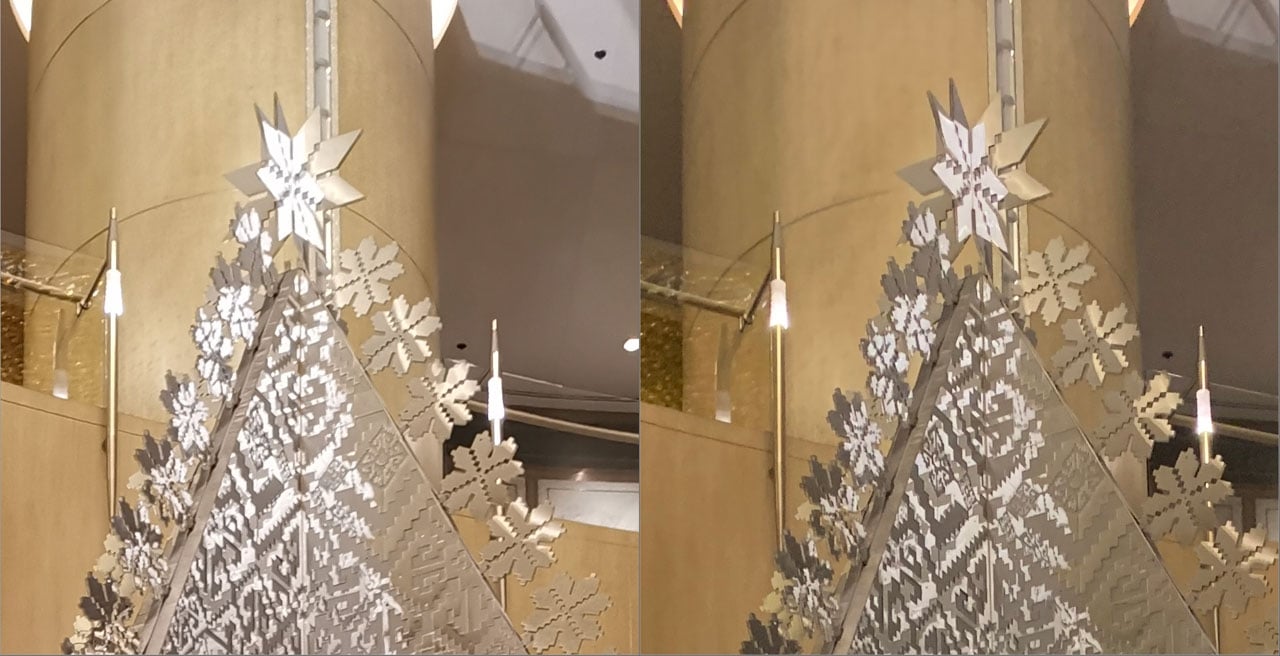
Huawei Mate 20 Pro (R), iPhone XS Max (L)
In this scenario, the Huawei Mate 20 Pro had the proclivity to take a more exposed photo to preserve details in dark areas. This, however, would lead to some of the lights becoming brighter and overexposing some of the features in the shot.
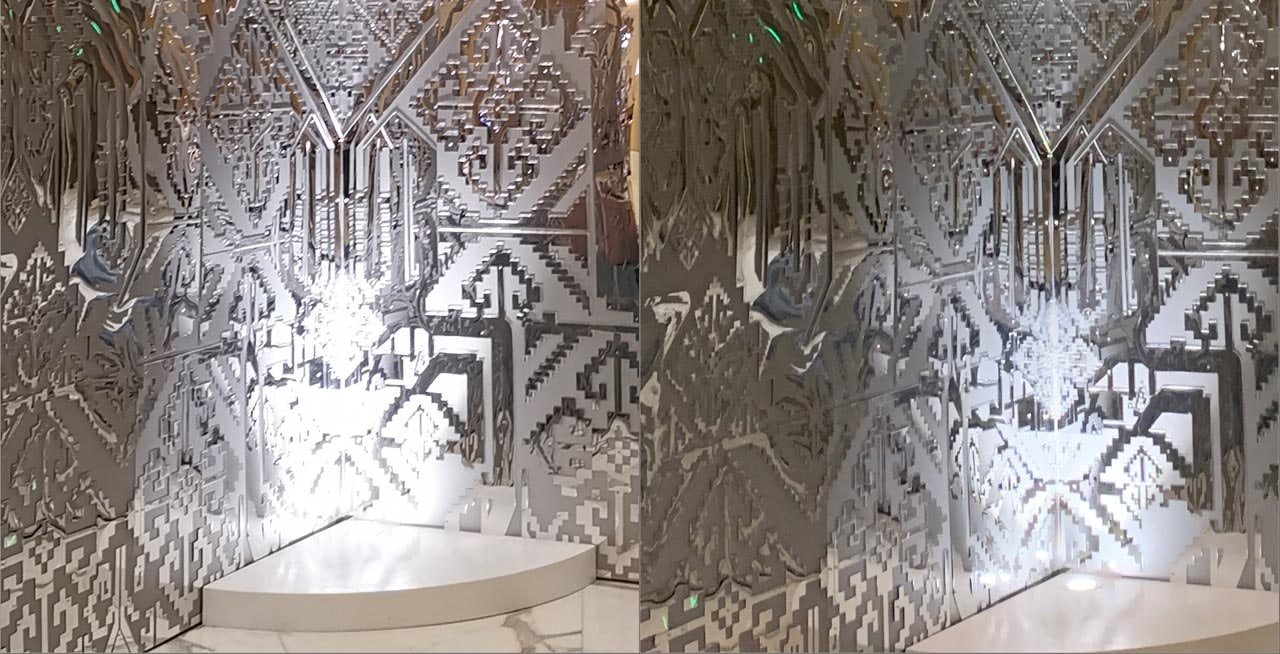
Huawei Mate 20 Pro (R), iPhone XS Max (L)
The Apple iPhone XS Max, on the other hand, does stick to a relatively lower exposure. This preserves the details of the bright spots in the photo but downplays most of the details in the darker areas of the scene.
The first photo in this series is a bit of a give or take. Both smartphones were set on auto and captured the same subject with almost the same result. The only difference in the smartphones is the exposure set by the software.
In this case, we do prefer the Huawei Mate 20 Pro’s route of increasing the exposure of the whole photo in order to preserve more detail in the darker areas while sacrificing only a few bright spots.
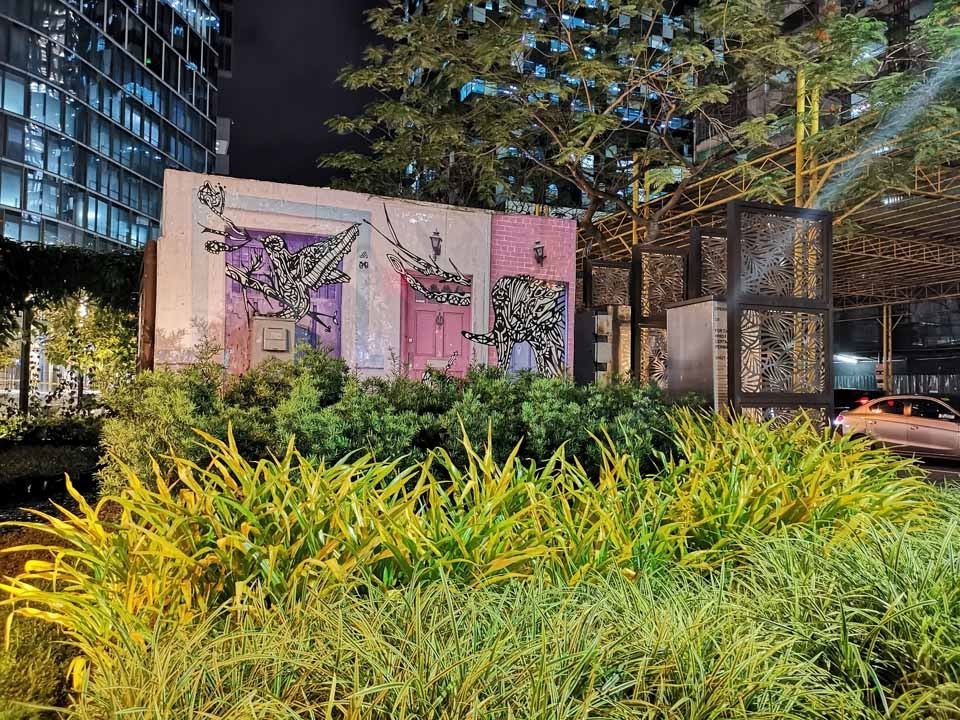
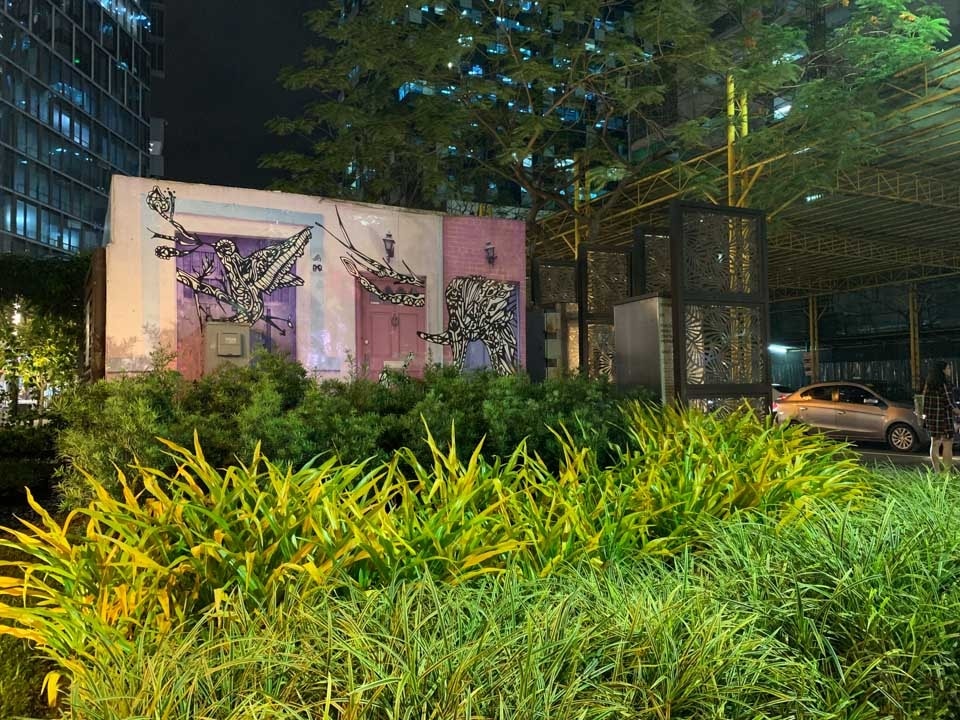
The second scenario of our comparison is an outdoor night scene. Bathed in artificial light, the photo is composed of street art, foliage, and the concrete jungle of the city.
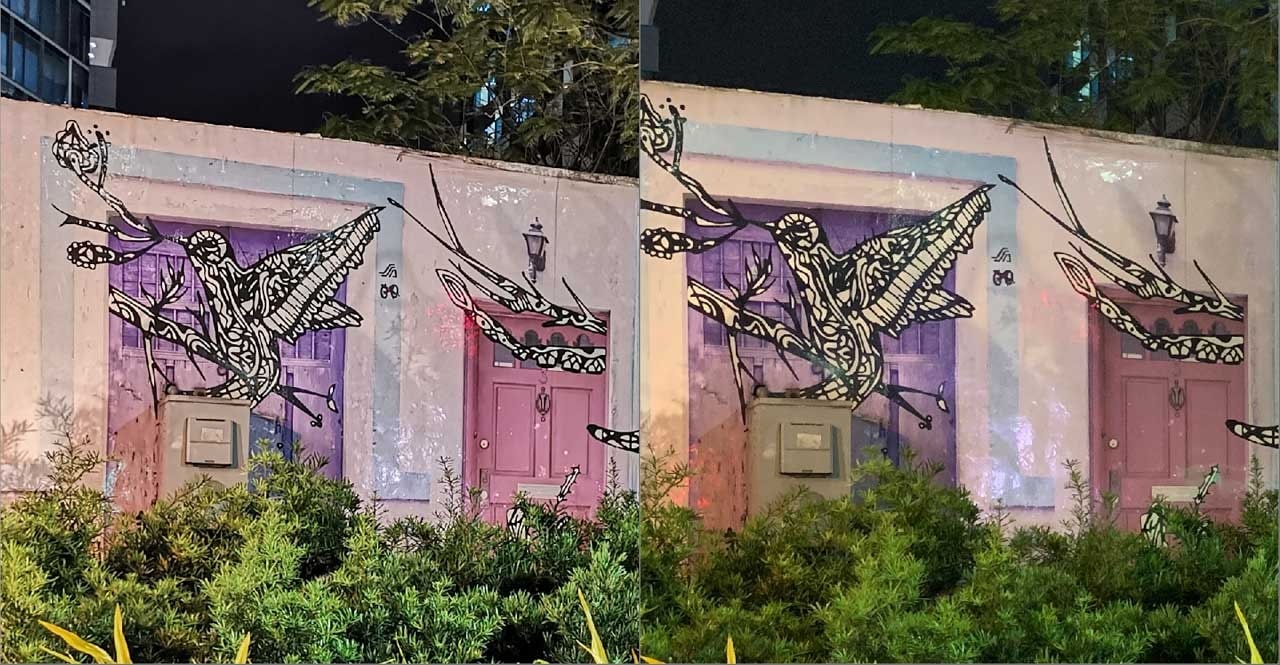
Huawei Mate 20 Pro (R), iPhone XS Max (L)
Like the first scenario, the second photo blends both gloomy edges and a well-lit center. As we’ve seen before, the iPhone XS Max tends to lean to a lower exposure while the Huawei Mate 20 Pro favors a more exposed photo.
In this photo, we fancy more the iPhone XS Max’s photo. Its final result puts a spotlight on the warm glow of the street art and foliage into the forefront while the dark, cold concrete of the cityscape takes a backseat to form depth in the photo.
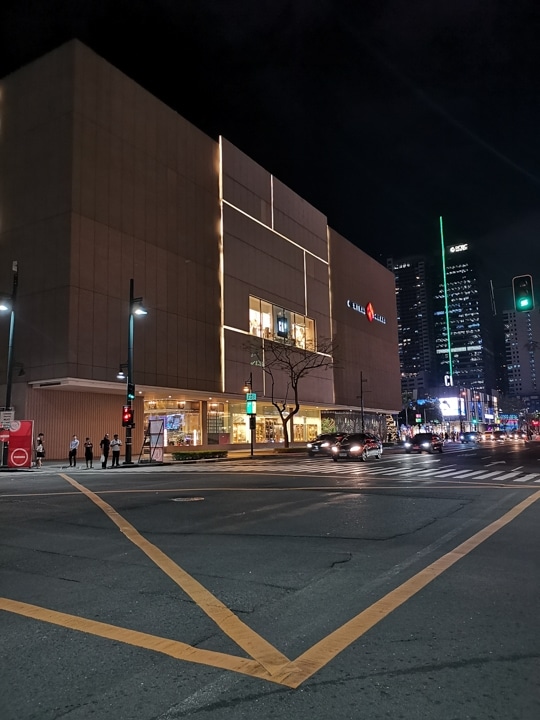
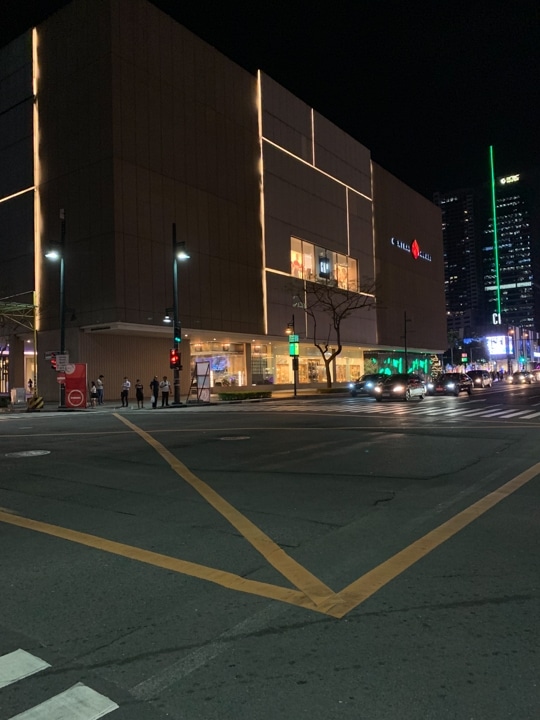
Our third photo for this series is a low angle shot of a mall, roads with cars, and towering buildings at the back. Like the two previous photos, this shot juxtaposes both bright and dark areas to see if both smartphones can tone down hotspots while simultaneously preserving details in darker zones.
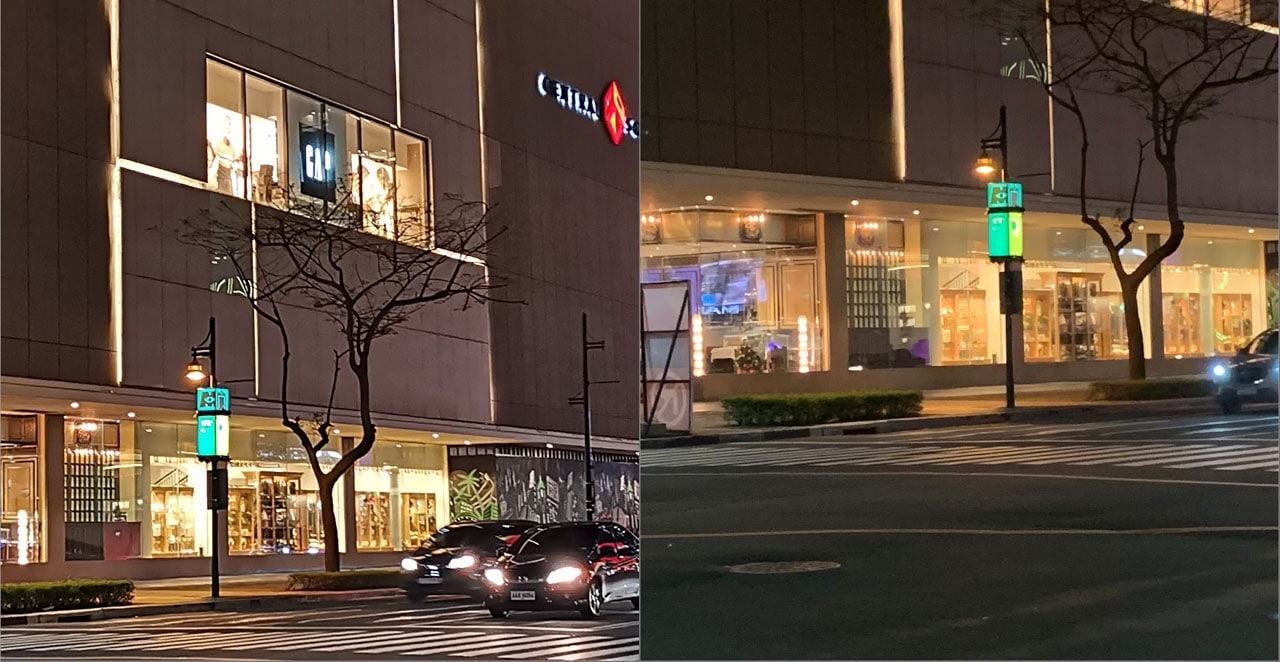
Huawei Mate 20 Pro (R), iPhone XS Max (L)
It seems that there’s a trend going with both the Huawei Mate 20 Pro and the iPhone XS Max. The former has chosen to up the exposure to bring out the detail in the darker areas of the photo while the latter did the reverse.
In this occasion, however, we prefer the Huawei Mate 20 Pro’s photo over the iPhone XS Max. As you can probably tell, features on the Mate 20 Pro’s photos are more prominent. Reflections on the cars are also more noticeable compared to the iPhone’s photo.
Scenario 4
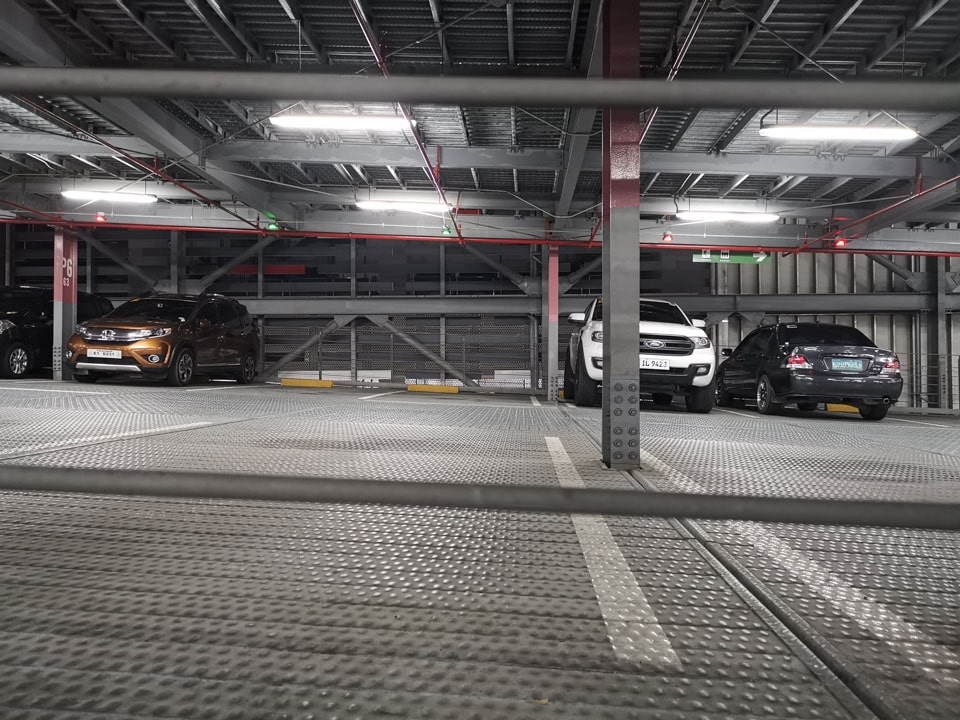

The fourth picture in this comparison is an indoor parking lot. There’s not a lot of dark areas here since indoor parking lots are supposed to have a lot of artificial lighting. This photo, however, have a lot of texture.
From the steel-studded floor, the bolts of the supporting structures, to the reflections of the cars, there’s a lot of details to be captured or lost by both smartphones.
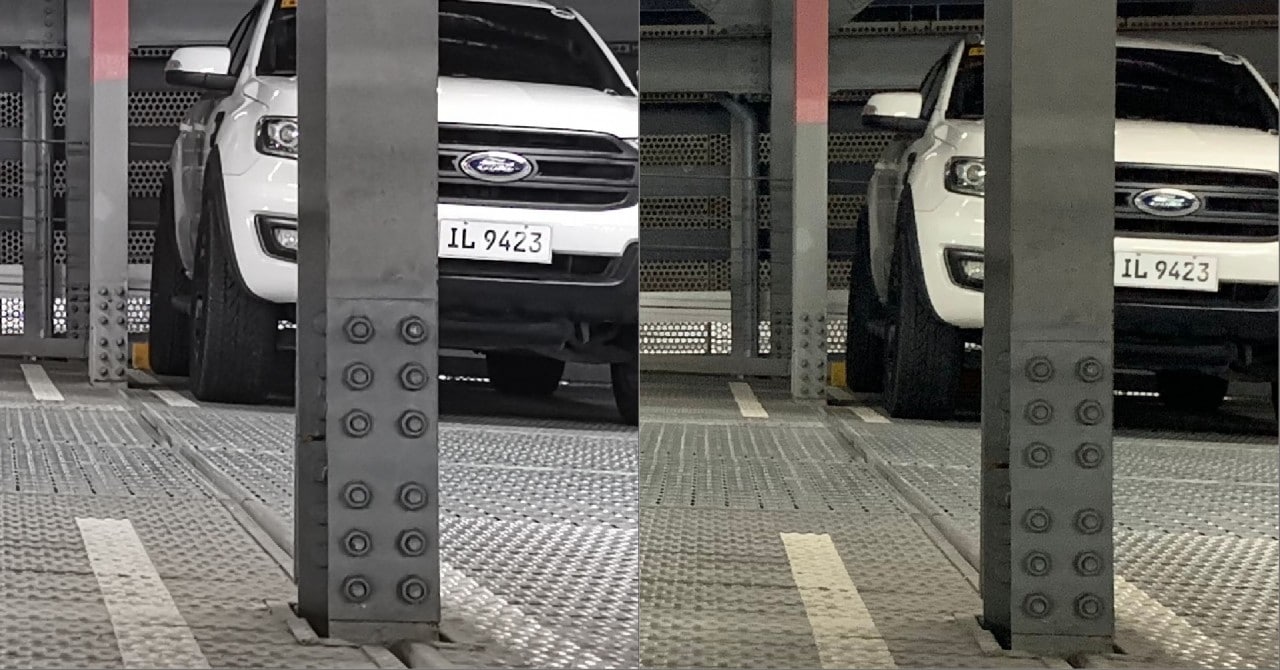
Huawei Mate 20 Pro (R), iPhone XS Max (L)
This is the photo where the Huawei Mate 20 Pro’s low-light capabilities really shine. As you can probably tell, the Mate 20 Pro’s photo looks a lot cleaner compared to the iPhone XS Max’s. There’s also a noticeable tinge of yellow on the latter.
Details on the steel-studded ground are better maintained in the Mate 20 Pro. The iPhone XS Max, meanwhile, have a bit of noise leading to a less-detailed photo.
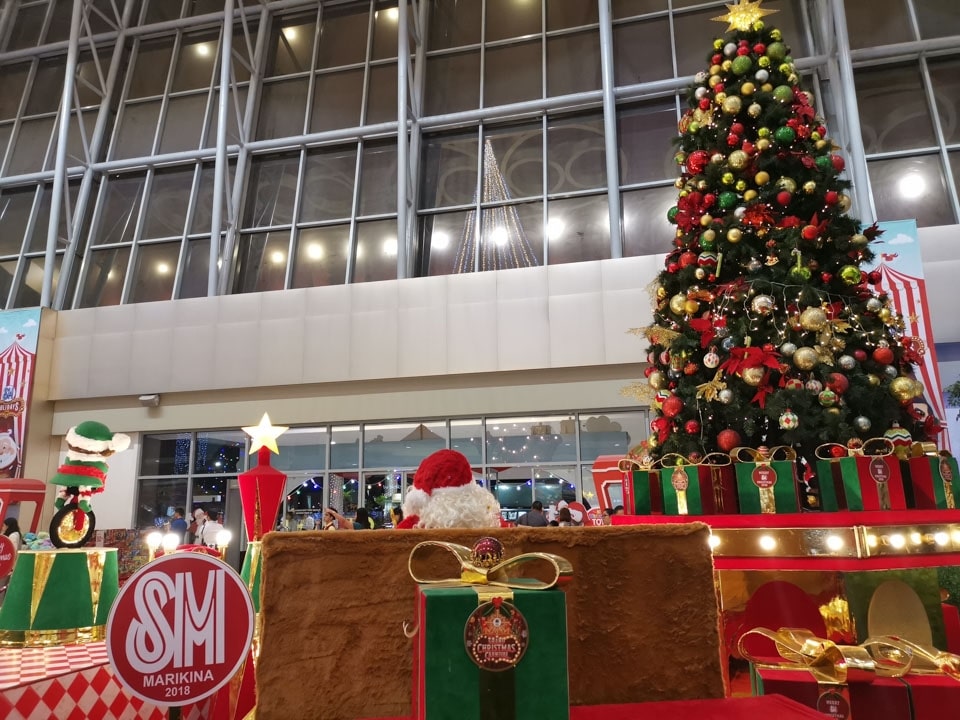

Our last scenario the Huawei Mate 20 Pro vs iPhone XS Max comparison is a photo inside a mall at dusk. As with most shopping malls, the powerful bulbs at the top of the building completely surrounds the scene with artificial light. Since the photo was taken at Christmas season, there’s a lot of colors to take into a single photo.
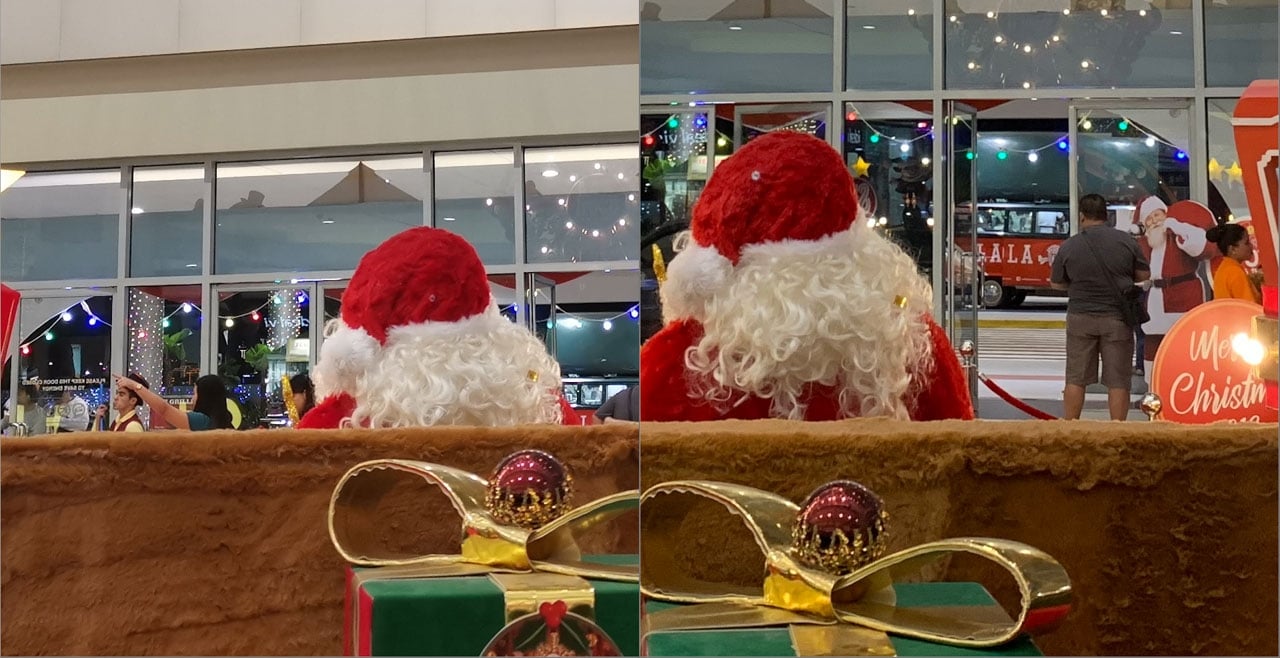
As with the last photo, the iPhone XS Max does tend to have a bit of yellow thrown in on the photo. This is especially noticeable while looking at the white hair of Santa Claus and the white walls. Aside from these dead giveaways, both photos look largely the same.
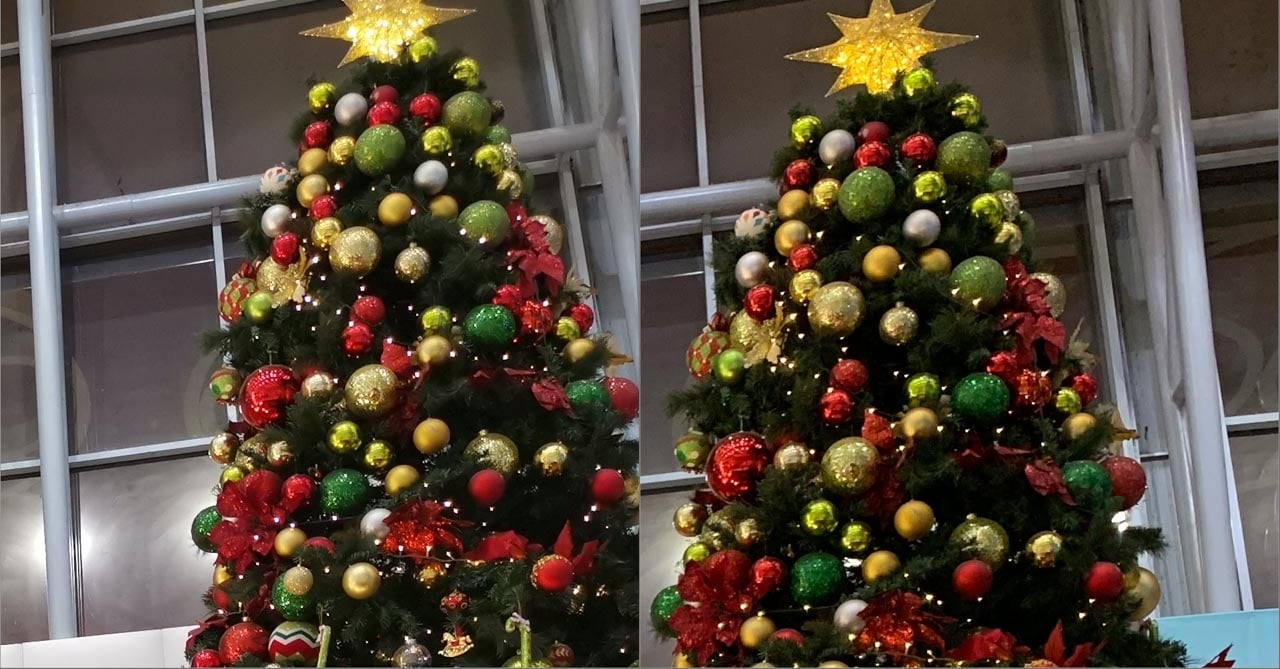
The star on the Christmas tree looks brighter at the Huawei Mate 20 Pro’s end. Although the darker tints of the iPhone XS Max gives more separation to the colorful balls and leaves.
The last photo pretty much tells the whole story of both these smartphones. Both sample shots are largely the same aside from some minute differences. At the end of the day, a users’ color preference will prevail in this types of photos.

Most photos of the Huawei Mate 20 Pro preserved more details compared to the iPhone XS Max. Color balance on the Mate 20 Pro is more accurate while the iPhone XS Max’s final product tends to have a yellow tinge.
The iPhone XS Max’s tendency to lean towards the overexposed side of the exposure bracket does have its uses at times. Both smartphones’ rear cameras performed admirably in the scenarios we put them through.
However, there will only be one winner of this test and that’s the Huawei Mate 20 Pro and by a small margin. To the naked eye, samples coming from both smartphones are almost identical aside from a couple of miniscule difference.
